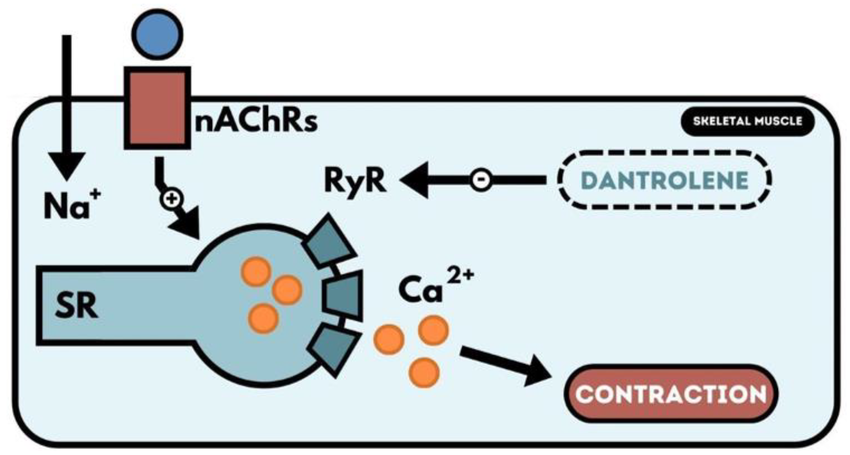Importance of Digital Marketing
Dear Friend,
This weekend marks my penultimate on-call shift for IMT training—just one more to go in two weeks. To say I’m excited about getting a bit of my life back would be a massive understatement! This week also happens to be the one-year anniversary of my book launch: The Revision Guide to Core Clinical Medicine.
A couple of weeks ago, I shared some key lessons I learned about the writing and publishing process. But there’s another piece of the puzzle that’s just as important—if not more important—that I wish I had understood from the beginning: marketing.
You can write the best book in the world, but if no one knows about it, it won’t get read.
When I first launched my book, I was so focused on getting everything perfect—page design, content accuracy, images, layout—that I left the marketing until after it was released. Big mistake.
Think about how Apple handles a new iPhone release. They don’t just casually mention it the day before. It’s teased months in advance at their events, and by the time launch day arrives, people are already lining up outside stores. That’s the power of a well-planned marketing strategy.
Since publishing my book, I’ve tried a whole range of promotion tactics—university visits, fresher’s fairs, Instagram posts, and Facebook ads. Thankfully, I’ve had the support of a publishing team helping me along the way. That said, I’ve also had to juggle it all with a full-time medical rota and writing book two at the same time.
Of all the marketing methods I’ve tested, the one that’s delivered the best results—hands down—is Facebook and Instagram ads.
So this week, I wanted to share some basic tips for anyone out there thinking about launching a book (or any product or business). These are simple ways to get your work seen online without breaking the bank — or needing to date a digital marketer (though that’s one option too, I guess 😄).

Facebook ads – a beginner guide
Facebook Ads can feel overwhelming at first—but don’t worry. With the right foundation, you can create effective campaigns that bring in clicks, leads, or sales without wasting your budget. Here’s your expanded quick-start guide to Facebook Ads:
1. Set Up Business Manager
Before you can run ads, you need to organize your account properly.
Go to business.facebook.com and set up a Meta Business Manager account. This lets you manage ad accounts, Pages, people, billing, and pixels all in one place.
Inside Business Manager, create (or link) your Facebook Page and Ad Account.
Add other users (like team members or freelancers) securely by assigning them roles.
🔐 Why it matters: This setup keeps your business assets secure, organized, and professional—especially if you’re managing multiple projects or working with clients.
🎯 2. Know Your Audience
Successful Facebook Ads start with knowing who you want to reach.
Think about your ideal customer. What are their interests, behaviors, age, location, and pain points?
Use Detailed Targeting in Ads Manager to narrow down people by their likes, job titles, hobbies, purchase behaviors, and more.
Try Custom Audiences by uploading email lists, connecting your website, or using data from Facebook interactions.
Build Lookalike Audiences from your best customers to reach new people who share similar traits.
💡 Pro Tip: Don’t target too broadly. The more specific your audience, the more relevant your ad will feel—and the better it will perform.
🖼️ 3. Craft Your Creative
This is what people actually see. Your ad creative needs to grab attention—and inspire action.
Use bright, relevant images or short videos that pop in the feed. Avoid text-heavy visuals.
Write a headline that clearly states what you’re offering. Example: “Free Shipping This Week Only!”
In the body text, highlight the benefits. What problem do you solve? How will the product or service make their life better?
Always include a clear CTA (call to action) like “Shop Now,” “Sign Up,” “Download Free Guide,” or “Learn More.”
🎨 Quick Formula:
Image/Video + Hook + Benefit + CTA = High-converting ad.
💸 4. Start Small, Test Smart
Don’t spend hundreds right out of the gate. Facebook’s algorithm works best with a little data first.
Begin with $5–$10 per day per ad set. Let it run for 3–5 days to gather data.
Use A/B testing (also called “split testing”) to compare different versions of your ads.
Try changing:
The headline
The image or video
The CTA button
The target audience
🧪 Why test? Because even small tweaks can make a big difference in performance—and you won’t know what works until you try.
📊 5. Measure and Optimize
Once your ads are running, the real work begins—analyzing and improving.
Open Ads Manager to track key metrics like:
CTR (Click-Through Rate) – Are people interested enough to click?
CPC (Cost Per Click) – How much are you paying for those clicks?
Conversion Rate – Are visitors taking action (buying, signing up, etc.)?
Use the Facebook Pixel (a small code snippet added to your website) to:
Track sales, sign-ups, and more.
Retarget visitors who didn’t convert.
Optimize for specific actions (like “Add to Cart” or “Complete Purchase”).
📈 Once you find an ad that performs well, scale it slowly—increase your budget by 10–20% every few days. This helps keep performance steady as you grow.
Final Thoughts
Getting started with Facebook Ads is a learning process, but the platform gives you incredible tools to reach your ideal audience and grow your business. Focus on clarity, consistency, and curiosity. Track what works, pause what doesn’t, and keep testing new ideas.
The best way to learn is to give it a go. On a budget of £5-10 per day, you have a lot more to gain than lose.
Hope you found that useful. Learning from the mistakes of last time, watch this space for the release of book 2 😉
Drug of the week
Dantrolene
is a postsynaptic muscle relaxant that lessens excitation-contraction coupling in muscle cells.
It achieves this by inhibiting Ca 2+ ions release from sarcoplasmic reticulum stores by antagonizing ryanodine receptors.
It is the primary drug used for the treatment and prevention of malignant hyperthermia, a rare, life-threatening disorder triggered by general anesthesia or drugs.
It is also used in the management of neuroleptic malignant syndrome, muscle spasticity (e.g. after strokes, in paraplegia, cerebral palsy, or patients with multiple sclerosis)

A Brain Teaser
A 35-year-old woman presents to the GP with a six-month history of fatigue, diarrhoea, bloating, and weight loss. She has since been on a lactose and gluten-free diet for the past three months which led to partial symptom improvement. She has no known past medical history. Further formal diagnostic testing is being considered.
Which is the most appropriate next step in the management of this patient?
A: Arrange for serological testing now
B: Continue only a gluten-free diet and monitor for symptom improvement
C: Refer for endoscopy and biopsy now
D: Reintroduce gluten for at least 4 weeks and arrange serological tests
E: Reintroduce gluten for at least 6 weeks and arrange serological tests
Answers
The answer is E – Reintroduce gluten for at least 6 weeks and arrange serological tests
Reintroduce gluten for at least 6 weeks and arrange serological tests. This is the recommended approach according to NICE guidelines. Gluten needs to be reintroduced for at least 6 weeks to provoke the immune response needed for accurate serological testing and potential biopsy for formal diagnosis. Without adequate gluten exposure, both serological and histological results may be falsely negative.
Arrange for serological testing now. Testing while on a gluten-free diet can result in false negatives, as gluten consumption is needed to trigger the immune response.
Continue only a gluten-free diet and monitor for further symptom improvement. Symptomatic improvement alone is not sufficient for diagnosing coeliac disease. Formal testing is necessary to confirm the diagnosis and guide long-term management.
Refer for endoscopy and biopsy now. Performing a biopsy while the patient is gluten-free would not yield accurate results. Gluten ingestion is necessary to observe the typical villous atrophy associated with coeliac disease.
Reintroduce gluten for at least 4 weeks and arrange serological tests. This is insufficient. Four weeks of gluten ingestion is unlikely to provoke the necessary immune and mucosal responses to provide accurate test results.



